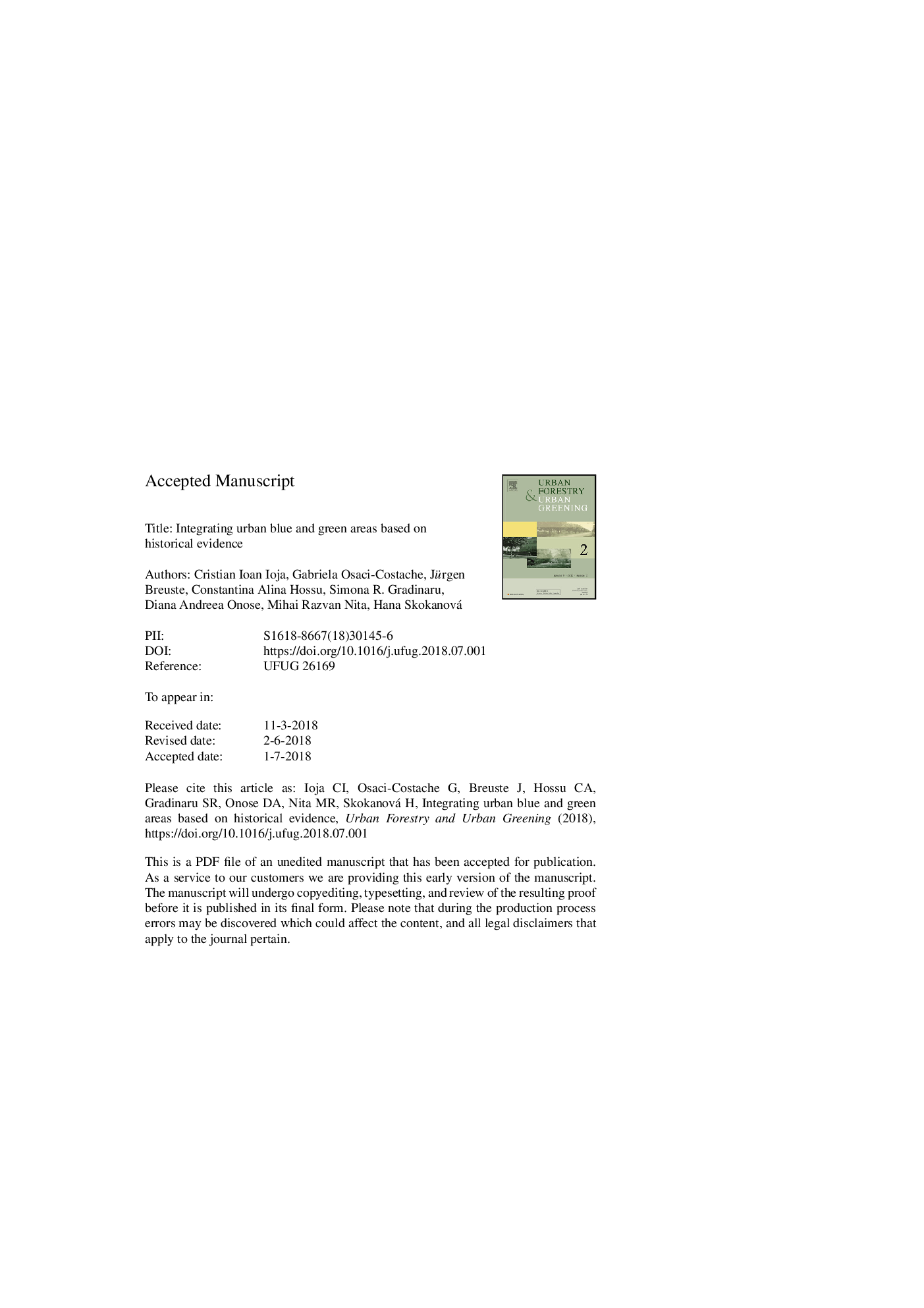| Article ID | Journal | Published Year | Pages | File Type |
|---|---|---|---|---|
| 6549093 | Urban Forestry & Urban Greening | 2018 | 26 Pages |
Abstract
The reduced proportion of open and especially green and blue spaces is one of the major threats experienced by cities. Scholars advocate for strategies to enhance green spaces in cities, but less attention is given to urban blue infrastructure, which also has important benefits for the health and well-being of the residents. The present study aims to identify the specific changes that urban waters and green spaces have experienced in the past to assess the blue-green space relationships as an important step to move towards a green infrastructure planning approach. Based on the information extracted from historical maps over the past 160 years (1856-2016), we performed a land-use change and connectivity analysis of Bucharest city, Romania. Our results show that the Bucharest system of urban waters has significantly changed from small and disconnected patches to large and better-connected areas. Furthermore, the improved connectivity among the water bodies was justified by their integration within urban parks. Built-up areas, agricultural land, green spaces and landfill sites were identified as land uses that decreased the urban water surface. The potential to integrate urban waters with the green infrastructure network is high, and its efficiency is determined not only by structural connectivity but also by functional and institutional aspects.
Related Topics
Life Sciences
Agricultural and Biological Sciences
Forestry
Authors
Ioan-Cristian IojÄ, Gabriela Osaci-Costache, Jürgen Breuste, Constantina Alina Hossu, Simona R. GrÄdinaru, Diana Andreea Onose, Mihai RÄzvan NitÄ, Hana Skokanová,
